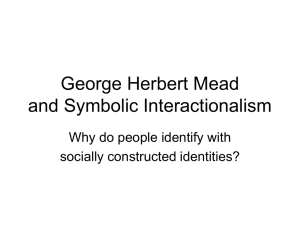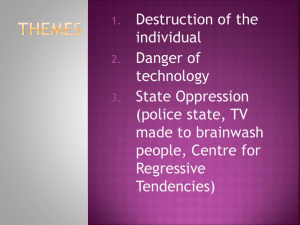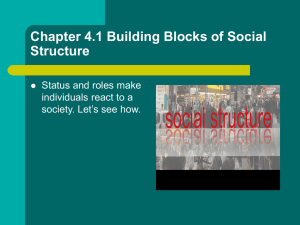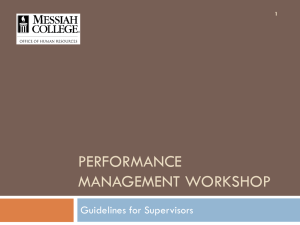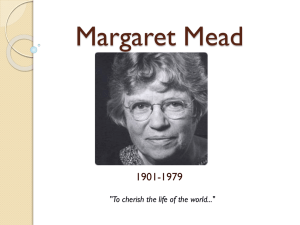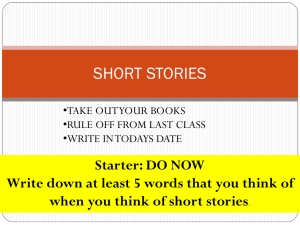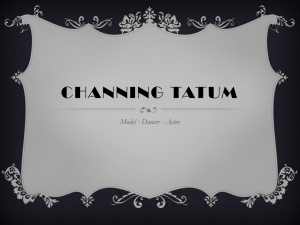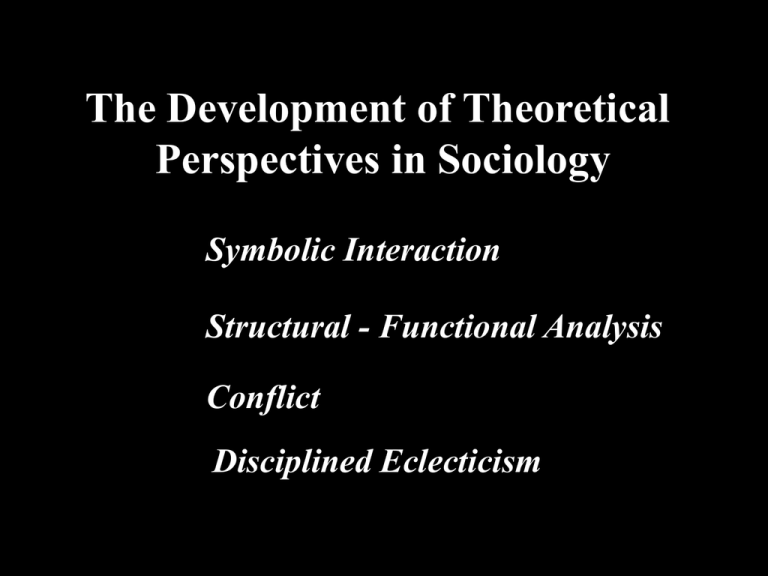
The Development of Theoretical
Perspectives in Sociology
Symbolic Interaction
Structural - Functional Analysis
Conflict
Disciplined Eclecticism
Theoretical Perspective
The term “theoretical perspective” refers to broad
assumptions about society and social behavior that serve
as a point of departure for sociological thinking and
research.
It focuses the analysts attention on some
aspects of the social world rather than others;
It defines some questions as especially relevant and
important and others as trivial and uninteresting.
In addition, these perspectives may be considered as
interpretative schemes: they offer a framework for
interpreting the results of specific studies.
Perspectives will
both facilitate
&
constrain perception
The Analogy of Using a
Flashlight in a Dark Room
The Burke Theorem
“A way of seeing is also a way
of not seeing - a focus upon
object A involves a neglect of
object B.”
Kenneth Burke
Literary Philosopher
1897-1993
Maslow’s Hammer
An over-reliance on a familiar tool
“It is tempting, if the only tool you have is
a hammer, to treat everything as if it were
a nail.”
The Psychology of Science, p. 15, 1966.
Abraham Maslow
1908 – 1970
Theoretical Perspective
No one perspective has successfully dealt with the entire range of
sociologically interesting questions. Starting with different sets of
assumptions, each perspective – structural-functionalist, conflict,
symbolic interactionist, and disciplined eclecticism – focuses on a
different range of social phenomena and, as a result, raises different
questions.
They should not, however, be thought of as being necessarily at odds
with one another. Although sociologists adhering to different
perspectives have marked disagreements with one another about the
nature of the social world, these perspectives are not necessarily
contradictory, nor mutually exclusive.
As one noted theorist has commented, “Many ideas in structural analysis
and symbolic interactionism . . . are opposed to one another in about the
same sense as ham is opposed to eggs: they are perceptively different but
mutually enriching” (Merton, 1976). Together, these three perspectives
provide a broader and deeper understanding of the world.
“A Beethoven string-quartet is truly, as some one has said,
a scraping of horses’ tails on cats’ bowels, and may be
exhaustively described in such terms; but the application
of this description in no way precludes the simultaneous
applicability of an entirely different description.”
William James, The Sentiment of Rationality, 1882
What is a
Human being?
Intellectual Setting - Review
Original Sin
Michelangelo, Fall From Grace
Malevolent Spirits
Human Beings
are constrained
by their heredity:
“Blood Tells”
Eugenicists
“The Apple Doesn’t Fall
Far From the Tree”
Human Beings
are bundles of
Instincts
William James: Instincts
Instinct: - “the faculty of acting
in such a way as to produce certain
ends, without foresight of the end,
or without previous education in
the performance.”
i.e, climbing, emulation, rivalry,
pugnacity, anger, resentment,
hunting, jealousy
Principles of Psychology, 1890
1842-1910
Human Beings
are Learning
Machines
“Behaviorism” - John B. Watson
“Give me a dozen healthy infants,
1878-1958
well-formed, and my own specified
world to bring them up in and I’ll
guarantee to take any one at random
and train him to become any type
of specialist I might select – doctor,
lawyer, artist, merchant-chief, and,
yes, even beggar-man and thief,
regardless of his talents, penchants,
tendencies, abilities, vocations, and
race of his ancestors.”
John B. Watson, Behaviorism, 1924
B. F. Skinner
1904 - 1990
S
rewards
punishments
R
Human Beings
are driven by
Unconscious
Motivations
Id
Superego
[Nature]
[Nurture]
Ego
[Self]
Sigmund Freud
1856 - 1939
Human Beings are
“Personalities”
Human Beings
are Rational
Cost-Benefit
Analysts
Deterrence Theory
The human being is a rational actor
Rationality involves an end/means calculation,
People (freely) choose all behavior, both
conforming and deviant, based on their rational
calculations - the central element of calculation
involves a “cost benefit analysis”
Choice, with all other conditions equal, will be
directed towards the maximization of individual
benefit
Jeremy Bentham
“utilitarianism”
1748 - 1832
Choice can be controlled through the imposition
of punishment that is “swift, certain, and severe.”
Human Beings
are driven by the
“interests” of their
Social Class
“. . . here individuals are dealt with only in so far as they are the
personifications of economic categories, embodiments of particular
class-relations and class-interests.”
Karl Marx, Capital, 1867
Human Beings are
Cultural Products
The Importance of Culture
Franz Boas
Boas, an anthropologist, embarked
on a life-long assault on the idea that
biology—race, in particular, was a
primary source of the differences to
be found in the mental or social
capabilities of human groups.
History, experience, and cultural
differences supply the answer.
1858-1942
Units of Analysis
Micro-level
Dyad
Individual
Macro-level
Units of Analysis
Macro-level
Micro-level
Dyad
Individual
Group
Triad
Units of Analysis
Macro-level
Micro-level
Dyad
Individual
Group
Triad
Social
Institutions
Formal Org
Bureaucracy
Social Institutions
Family
Education
Polity
Religion
Economy
Science
Units of Analysis
Macro-level
Micro-level
Dyad
Individual
Group
Triad
Social
Institutions
Formal Org
Bureaucracy
Society
The Social System
Politics
Economy
Science
Family
Education
Religion
Institutional
Autonomy &
Interdependence
Units of Analysis
Macro-level
Micro-level
Structural-Functional
Symbolic Interaction
Dyad
Individual
Group
Triad
Conflict
Social
World
Institutions
Formal Org
Bureaucracy
Society
Symbolic
Interaction
Symbolic Interactionist Approach
George Herbert Mead
Mead – and others who followed his footsteps – believed
that previous approaches ignored the fundamental fact
that individuals “think” – they actively perceive, define,
and interpret the world around them.
Rather than see the actor as a passive puppet blindly
responding to stimuli – as did Watson (in Mead’s view) –
Mead wanted to understand what goes on between
stimulus and response. Do all individuals interpret and
define the stimulus in the same manner?
1863 - 1931
Symbolic Interactionist Approach
George Herbert Mead
According to Mead, we can train a dog using reward
and punishment – the behaviorist approach advocated
by Watson – but the dog does not attach meaning to its
actions.
A dog responds to what you do, but a human responds to
what you have in mind as you do it.
You can train a dog to fetch your umbrella from the
hallway, but if he can’t find it, not knowing your true
intention, it won’t now look for your raincoat.
1863 - 1931
Symbolic Interactionist Approach
George Herbert Mead
Rather than see individuals behavior largely affected by
either psychological factors – as did Freud – or genetically
determined impulses – as did Davenport, over which people
had no control, Mead wanted to focus on how actors,
when confronted with situations,
(1) define the objects and situation they encounter,
(2) creatively think about possible modes of conduct,
1863 - 1931
(3) imagine the consequences of alternative courses of
action,
(4) eliminate unlikely possibilities, and finally
(5) select what they believe to be the best course of action.
Symbolic Interactionist Approach
George Herbert Mead
Rather than focus attention on the larger structure of
society – the inequalities inherent in a capitalist economy
that were stressed by Marx – Mead wanted to focus on
the practical face-to-face, day-to-day activities of people
in their more immediate social setting. How do they
communicate? How are “symbols” created, defined, and
shared by interacting individuals? How is “reality”
socially constructed from the ground up?
1863 - 1931
Since action is created by the actor out of what he
perceives, interprets, and judges, to fully understand it
the analyst would have to see the situation as
the actor sees it, perceive objects as the actor perceives
them, ascertain the meanings they have for the actor,
and follow the actor’s line of conduct as the actor
organizes it and modifies it during its course.
The “Subjective Element” in Social Action
The Thomas Theorem
“The Definition of the Situation”
“If men define situations as real, they are
real in their consequences.”
Interpretative flexibility
W. I. Thomas
1863-1947
Symbolic Interactionist Approach
Charles Horton Cooley
How do we acquire a sense of “self?”
“Looking-glass self”
“Each to each a looking glass
Reflects the other that doth pass.”
Three elements:
1864-1929
1.
The imagination of our appearance to the
other person
2.
The imagination of his judgment of that
appearance
3. Some sort of self-feeling, such as pride or
mortification.
Symbolic Interactionist Approach
Charles Horton Cooley
How do we acquire a sense of “self?”
“Primary Groups”
1864-1929
“By primary groups I mean those
characterized by intimate face-to-face
associations and cooperation. They are
primary in several senses, but chiefly in
that they are fundamental in forming
the social nature and ideals of the
individual.”
Symbolic Interaction
Herbert Blumer
1900-1987
How do people go about creating, defining, sharing and
using “symbols” to facilitate interaction?
“Interpretative flexibility”
What is a “Symbol?”
Anything that stands for something other than itself.
Anything that carries a particular meaning that is recognized
and shared by people.
A word
A hairstyle
A cross
A whistle
A flashing light
A piece of jewelry on a finger
A raised fist
A flag
A manner of dressing
A gesture
The “Dramaturgical Perspective”
Erving Goffman
1922-1982
All the world’s a stage,
And all the men and women merely players.
They have their exits and their entrances;
And one man in his time plays many parts . . .
As You Like It. Act ii. Sc. 7.
1564-1616
Of the first eighteen years of his life NOTHING is known.
They are a blank.
There is nothing in the papers of his literary contemporaries
which refer to Shakespere as a fellow writer.
The most detailed theatrical records of the time, those of
Phillip Henslowe the proprietor of several London theatres
make no reference to “Shake-speare” although other actors
are named as well as playwrights
What knowledge did the author have to possess
to be capable of writing the plays and sonnets?
Life in the royal court.
Falconing and other sports of the privileged class.
Military strategy and terminology.
Classical education.
The plays and poetry of “Shake-speare” reveal a person who
received the best education available, yet there is no record of
Shakspere attending Stratford Grammar School nor either
University or the Inns of Court. Nor do we have any record of
him being in the household of a great family where he could
have received an education.
His death went entirely unnoticed by the literary
world compared, for example, with that of Beaumont,
who died the same year, Spenser and Ben Jonson all
of whom were mourned with much ceremony.
Shakespeare’s Last Will and Testament
It is a thoroughgoing business man's will. It named in minute
detail every item of property he owned in the world - houses,
lands, sword, silver-gilt bowl, and so on - all the way down to his
"second-best bed" and its furniture.
He left his wife that "second-best bed."
And NOT ANOTHER THING; not even a penny.
It mentioned NOT A SINGLE BOOK.
Books were much more precious than swords and silver-gilt
bowls and second-best beds in those days, and when a departing
person owned one he gave it a high place in his will.
The will mentioned NOT A PLAY, NOT A POEM, NOT AN
UNFINISHED LITERARY WORK, NOT A SCRAP OF
MANUSCRIPT OF ANY KIND.
The only written works of Shakspere to come down to us are
six signatures, three on the pages of his will and three on
legal documents.
Edward de Vere
Earl of Oxford
1550-1604
Christopher Marlowe
1554-1593
The “Dramaturgical Perspective”
Actor
Social Roles
Scripts
Props
Rehearsal
Erving Goffman
1922-1982
The “Dramaturgical Perspective”
Actor
Social Roles
Scripts
Props
Rehearsal
Front Stage vs. Back Stage
Evaluation of Role Performance
Erving Goffman
1922-1982
The “Dramaturgical Perspective”
The Presentation of Self in Everyday Life
“impression management”
Behavior in Public Places
taken-for-granted rules and procedures of interaction;
“expressions-given” vs. “expressions-given-off”
Stigma: Notes on the Management of Spoiled Identity
Interaction Ritual: Essays on Face-to-Face Behavior
“embarrassment” as a social phenomenon
“face-work”
Theory of Differential Association
Edwin Sutherland
1883 - 1950
1. Criminal behavior is learned.
2. Criminal behavior is learned in interaction with other
persons in a process of communication.
3. The principal part of the learning of criminal behavior
occurs within intimate personal groups.
4. When criminal behavior is learned, the learning
includes techniques of committing the crime, which
are sometimes very complicated, sometimes simple and
the specific direction of motives, drives, rationalizations,
and attitudes.
According to Sutherland, the process of learning criminal behavior by
association with criminal and anti-criminal patterns involves all of the
mechanisms that are involved in any other learning.
Labeling
Howard Becker
Labeling theory focuses on the reaction of other people and the
subsequent effects of those reactions which create deviance. When it
becomes known that a person has engaged in deviant acts – or if it is
widely believed to be so – she or he is then treated differently by others.
They are labeled, “whore,” “thief,” “abuser,” “junkie,” and the like.
Becker noted that this process creates “outsiders,” who are outcast
from society, and then begin to associate with other individuals who have
also been cast out. When more and more people begin to think of these
individuals as deviants, they respond to them as such; the deviant
reacts to such a response by continuing to engage in the behavior society
now expects from them.
The Self-fulfilling Prophecy
“In the beginning, a false definition of a
situation that is socially shared and leads
to new behavior that makes the initially
false definition come true.”
False definition: “the bank is failing”
Behavior: people run to the bank to
withdraw their money.
Consequence: the bank fails
Robert K. Merton
1910 - 2003
Individuals as
Status-Occupants
“only insofar as”
Obligations and Responsibilities
[What am I supposed to do?]
Normative Expectations (Rules)
[How am I supposed to do all this?]
Social Status
Cognitive Attributes: Beliefs, Values,
Motivations and Attitudes
Interests
[Conflict is built-in society.]
Power & Authority
Social Capital
[Access to Opportunities and Resources]
[Inequality is built-in society]
Obligations and Responsibilities
What am I supposed to do?
Where do these come from?
How do they change over historical
time? - ie., fathers and parenting
Social Status
The extent to which individuals who
occupy a given status live up to the
responsibilities and obligations that
are called for varies.
Individuals who occupy a given status
must take these into account.
“Family resemblances,” “social fugues”
Obligations and Responsibilities
[What am I supposed to do?]
Normative Expectations (Rules)
[How am I supposed to do all this?]
Social Status
Normative Expectations (Rules)
How am I supposed to do all this?
Guidelines, rules for social conduct.
They indicate how one “ought” to act or
behave in social settings:
Social Status
Prescribe - Proscribe
Permitted - Preferred
Norms vary from one culture to another.
Norms vary from one sub-culture to another.
Norms vary over historical time.
Normative Expectations (Rules)
How am I supposed to do all this?
Do not confuse “norms” with actual
action or behavior.
Social Status
The extent to which people consider
norms legitimate varies.
The extent to which people comply with
norms varies.
Norms vary in their importance:
Folkways - norms for routine or casual interactions
Mores - norms that are derived from moral values
Laws - norms that are codified and are sanctioned
Taboos
Obligations and Responsibilities
[What am I supposed to do?]
Normative Expectations (Rules)
[How am I supposed to do all this?]
Social Status
Cognitive Attributes: Beliefs, Values,
Motivations and Attitudes
Mutually reinforcing and reciprocal
expectations
Whether we recognize it or not, we
possess a vast storehouse of “social
knowledge” and, to varying degrees,
know what is expected of us & know
what to expect of others.
S
T
A
B
I
L
I
T
Y
Obligations and Responsibilities
[What am I supposed to do?]
Normative Expectations (Rules)
[How am I supposed to do all this?]
Social Status
Cognitive Attributes: Beliefs, Values,
Motivations and Attitudes
Interests
[Conflict is built-in society.]
S
T
A
B
I
L
I
T
Y
Interests
Conflict is built-in society.
Social Status
Conflict is built-in to the very fabric of
society. It is as normal - and healthy - as
the air we breathe and most often occurs
in socially patterned ways.
People who occupy different social
positions - by virtue of occupying different
positions - will have different sets of
LEGITIMATE interests, values and
attitudes.
The vast majority of conflict that occurs in society is the
result of people - status-occupants - living up to the
expectations placed upon them.
Interests
Conflict is built-in society.
Social Status
If conflict is built-in to the very fabric of
society, how is it managed?
What are the patterns and functions of
conflict?
How are conflicts - whether legitimate or
not - resolved?
Obligations and Responsibilities
[What am I supposed to do?]
Normative Expectations (Rules)
[How am I supposed to do all this?]
Social Status
Cognitive Attributes: Beliefs, Values,
Motivations and Attitudes
Interests
[Conflict is built-in society.]
Power & Authority
S
T
A
B
I
L
I
T
Y
Power & Authority
Power: the capacity to impose one’s will
over others, even against the resistance
of others; coercion.
Social Status
Authority: the capacity to have others
comply with your wishes - even if they
would prefer not to - because they
recognize the legitimacy of the request.
Power and authority are not individual attributes, they are
located in the positions people occupy; ie., the President.
The extent to which power is exercised by status-occupants vary;
ie., Eisenhower and Nixon (impeachment).
Power & Authority
Power and authority are not equally
distributed in all social statuses:
Social Status
Employer - employee;
male - female;
professor - student;
Dean - professor;
wealthy - poor;
white - non-white
As a result, we should expect different outcomes in society:
racial disparities in sentencing;
unequal pay for men and women
Obligations and Responsibilities
[What am I supposed to do?]
Normative Expectations (Rules)
[How am I supposed to do all this?]
Social Status
Cognitive Attributes: Beliefs, Values,
Motivations and Attitudes
Interests
[Conflict is built-in society.]
S
T
A
B
I
L
I
T
Y
Power & Authority
Social Capital
[Access to Opportunities and Resources]
[Inequality is built-in society]
Social Capital
Access to Opportunities and Resources
Inequality is built-in society
“Central or Controlling Statuses”
Social Status
Different statuses provide occupants
different degrees of access to resources
and opportunities - some more, some
less.
Obligations and Responsibilities
[What am I supposed to do?]
Normative Expectations (Rules)
[How am I supposed to do all this?]
Social Status
Cognitive Attributes: Beliefs, Values,
Motivations and Attitudes
Interests
[Conflict is built-in society.]
S
T
A
B
I
L
I
T
Y
Power & Authority
Social Capital
[Access to Opportunities and Resources]
[Inequality is built-in society]
Status-sets
Status-sets
“identities”
Father
Uncle
Age:
62
Race:
“White”
Professor
Executive
Director
Friend
Status-Activation & “Salient Statuses”
Since individuals occupy multiple statuses, which specific status
becomes activated at any given time? How is this “socially
negotiated” by partners in interactions? How are discrepant
activations resolved?
Status-sets
“identities”
Father
Uncle
Age:
62
Race:
“White”
Professor
Executive
Director
Friend
Since individuals occupy multiple statuses they are subject to
“cross-pressures.”
“Status-consistency” - to what extent are the beliefs, values
attitudes, interests and social standing
attached to different statuses in an
individual’s status-set consistent?
How are the inevitable inconsistencies
that arise managed?
Status-sets
Master and Dominant Statuses
Master status: that status within an individual’s status-set that
has special importance for social identity, often
shaping a person’s entire life.
Dominant status: that status within an individual’s status-set that
is given priority when the behavioral expectations
associated with two or more statuses come into
conflict.
Status-conflict; Status-strain
Father
Uncle
Age
62
Race:
“White”
Professor
Executive
Director
Friend
Conflict: living up to the demands and obligations of one status
precludes fulfilling the demands and obligations of
another status.
Strain: you can fulfill all of your demands and obligations
but at less than peak efficiency. You “prioritize”
and cut corners.
Status-sets & Institutional Interdependence
Familial
Economic
Religious
Political
Educational
Science
The Protestant Ethic and
The Spirit of Capitalism
The Puritan Spur
to Science
Social Status and corresponding Role-Set
Physician
Patient
“detached” - “concern”
Role-set corresponding to the status of “Professor”
Professor
Students
Colleagues
Deans
Support
Community
Staff
Professor
Students
Colleagues
Deans
Support
Community
Staff
Status-conflict or
Status-strain
Role-conflict or
Role-strain
The Ubiquity/Inevitability of Conflict
Conflict is built-in to the very fabric of society. It is as
normal - and healthy - as the air we breathe and most
often occurs in socially patterned ways.
People who occupy different social positions - by virtue
of occupying different positions - will have different sets
of LEGITIMATE interests, values and attitudes.
These differences may be exacerbated by political differences and
an all too familiar pattern appears:
(1) Circling the wagons and polarizing the issues
(2) Drawing and responding to caricatures of opponents
(3) Selective perception
(4) Talking past one another - looking to “score” off the other person
The Communication Process
WHO says
Attributes of the “source,” ie. credibility
WHAT
The content of the message: levels of meaning;
Differential & selective perception
to
WHOM
through which
CHANNEL
in what
WAY
The target audience
Formal; mass media
Informal; interpersonal
Rhetorical Strategy: Logic, Emotion
with what
Reinforcement; Conversion
EFFECT?
“The Popeye Effect”
WHO
Credibility
WHAT
WHOM
Issue vs.
Image
Target
Audience
WAY
CHANNEL
Rhetorical
Strategy
Audio,
Visual,
Interpersonal
Effects
Activation
Crystallization
Reinforcement
Conversion
The “Popeye Effect”
Messages “sent” are not necessarily the same as
messages “received.”
WHY???
Messages are often misperceived or have a “boomerang effect”
because the source of the information is not believed to be credible.
Messages often contain multiple levels of information and meaning.
Through the operation of “selective perception,” the particular
aspect of the message one “plugs into” or is most attentive to and the interpretation one gives to a message, often depends
upon the social background - the social status - of the receiver.
Visualizing Society
as a
Social System
Structural – Functional
Analysis
Social Systems
Structural – Functional Analysis
Harvard University
Talcott Parsons
1902 - 1979
Robert K. Merton
1910 - 2003
Biological
System
Walter B. Cannon
1871 - 1945
System
A system is made up of different parts.
Parts can be independently isolated and analyzed.
How does each contribute to the smooth operation of
the total system? What functions do they serve?
Parts are interdependent. Whatever happens in one part
reverberates throughout the entire system.
How does each part affect all of the others?
The normal state of the system is equilibrium and stability.
How is it maintained?
The Social System
1.
Identify the parts of the system
Biological System
Social System
Individual Cells
Social Statues/Roles
Tissues (clusters of
specialized cells)
Groups
Organs
Institutions
Body
Society
Social Institutions
Family
Father
Mother
Son
Daughter
Brother
Sister
Aunt
Uncle
Cousin
Grandmother
Polity
President
Senator
Congressman
Governor
Mayor
Assemblyman
Judge
Lawyer
Education Economy Religion Science
Teacher
“X” Occupation
Student
Consumer
Dean
entrepreneur
Principal
Superintendent
Priest
Researcher
Minister Lab tech
Rabbi
Deacon
Congregant
Structural-Functional Analysis
What are the different structural - socially patterned types of families that are found in the world? How
are the experiences of family members affected by
the type of family?
Nuclear
Extended
Blended
Monogamous
Polygynous
Polyandrous
Endogamous
Exogamous
Single-parent
Widowed
Divorced
Never Married
Patrilineal
Matrilineal
Same Sex
Social Functions
FAMILY
RELIGION
Socialization; regulation
of sexual activity
Social cohesion;
Social control
POLITY
Setting goals & laws
Social control;
Defense
EDUCATION
Transmitting requisite
skills & knowledge;
Socialization;
ECONOMY
SCIENCE
Production & distribution
of goods & services
Technology; medicine
Early Structural - Functional Analysis
Major emphasis on “functions” - those consequences that
contribute to the stability of the social system.
Analogy with biological system:
bacteria and viruses - which are “outside” of the
body - “attack” and threaten the health of the body
conflict and social disruptions are like diseases that
threaten the health of society
The Social System
Politics
Economy
Science
Family
Education
Religion
Institutional
Autonomy &
Interdependence
Social Institutions
Family
Beliefs
Values
Attitudes
Norms
Customs
Traditions
Polity Economy Education Religion Science
Systemic Interdependence
Church
&
State
Billy Graham, 1951
“The Christian people of America will not sit idly by . . . .
They are going to vote as a bloc for the man with the
strongest moral and spiritual platform, regardless of his
views on other matters. I believe we can hold the balance
of power.”
Jerry Falwell
The Moral Majority
1979
Founded in 1988 by Pat Robertson and led--until recently--by
Ralph Reed, the Christian Coalition claims to have one to seven
million members and an annual budget of over $20 million.
The CC emphasizes grassroots organizations and direct action.
Focus on the family was foundered and is
Headed by Dr. James Dobson. His thirtyMinute flagship radio program is broadcast
At least 18,000 times a week over 4,000
Stations. His audience is estimated at five
Million and his books sell in the millions.
Phyllis Schlafly founded the Eagle Forum
in 1975, a woman’s organization whose
primary purpose was to fight passage
of the Equal Rights Amendment.
Beverly LaHaye’s Concerned Women For America has
600,000 members and more than 800 chapters. It is the largest
woman’s organization in the country--more than twice as
large as NOW.
According to its web site, “CWA is built on prayer and action . . .
helping our members across the country bring Biblical
principles into all levels of public policy.”
Founded by Bill McCartney, Promise
Keepers stresses family responsibility
with emphasis on male leadership.
It has drawn upwards of 50,000 men
for two-day meetings around the
country.
Major emphasis on sex and
violence in the mass media
Rev. Don Wildmon
Led by Robert Simonds, Citizens for Excellence
in Education helped place more than 25,000
Christians on local school boards in the 1980's
and 1990's in order to facilitate the teaching
of Christian values. Now, however, arguing
that the school system will not bend, Simonds
states that Christians must exit the public
schools as soon as is possible and feasible and
has launched “RESCUE 2010.”
Systemic Interdependence
Church
&
State
Sex
Education
Connie Marshner
Systemic Interdependence
Church
&
State
Textbook
Controversies
Sex
Education
Mel & Norma Gabler
Educational Research Analysis
http://members.aol.com/TxtbkRevws/
Texas State Board of Education
Objected to what she called "asexual stealth
phrases" such as "individuals who marry."
"Opinions vary on why homosexuals,
lesbians and bisexuals as a group are
more prone to self-destructive behaviors
like depression, illegal drug use, and suicide."
Terri Leo,
Spring, Texas
Texas State Board of Education
"We were not trying to put creationism in.
We were asking merely that the law be
followed. There are no transitional species
ever found in the fossil record.
Terri Leo
State Board of Education
District 6
“Our school systems teach the children that
they are nothing but glorified apes who have
evolutionized out of some primordial soup of
mud.”
House Republican Majority Whip Tom DeLay,
explaining the school massacre in Littleton,
Colorado.
Systemic Interdependence
Church
&
State
Textbook
Controversies
Sex
Education
Evolution
&
Special Design
Intelligent Design
New laws that in some way challenge the teaching of evolution
are pending or have been considered in 20 states.
Status-sets & Institutional Interdependence
Familial
Economic
Religious
Political
Educational
Science
The Protestant Ethic and
The Spirit of Capitalism
The Puritan Spur
to Science
Systemic Interdependence
Gay
Marriage
Church
&
State
Prot Ethic
Capitalism
Textbook
Controversies
Sex
Education
Evolution
&
Special Design
Stem cell
Cloning
Functional Analysis
Unintended Consequences
Adam Smith
Thomas Malthus
Karl Marx
It’s not mere happenstance - there are specifiable and
predictable reasons why these occur.
We don’t know precisely what and when - just why.
Most of the consequences of purposive social action
are unintended.
Structural-Functional Analysis
All social actions and behaviors have multiple consequences,
some of which are intended (manifest), the vast majority of
which are unintended and unanticipated (latent).
Consequences that contribute to the stability of a social system
are called functions.
Consequences that disrupt the social system are called
dysfunctions.
Manifest
Functions
Dysfunctions
Latent

